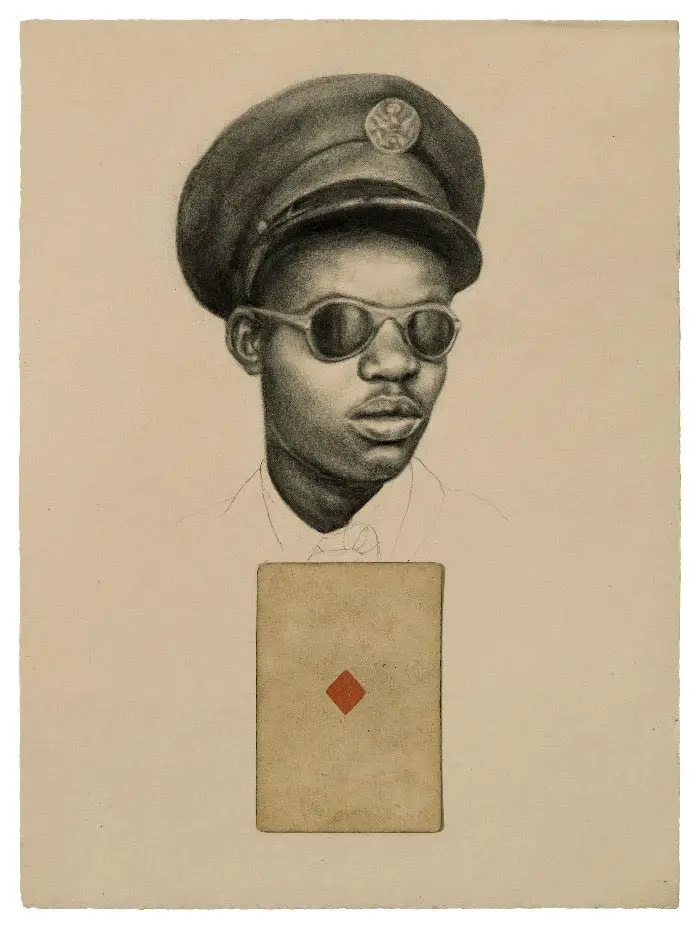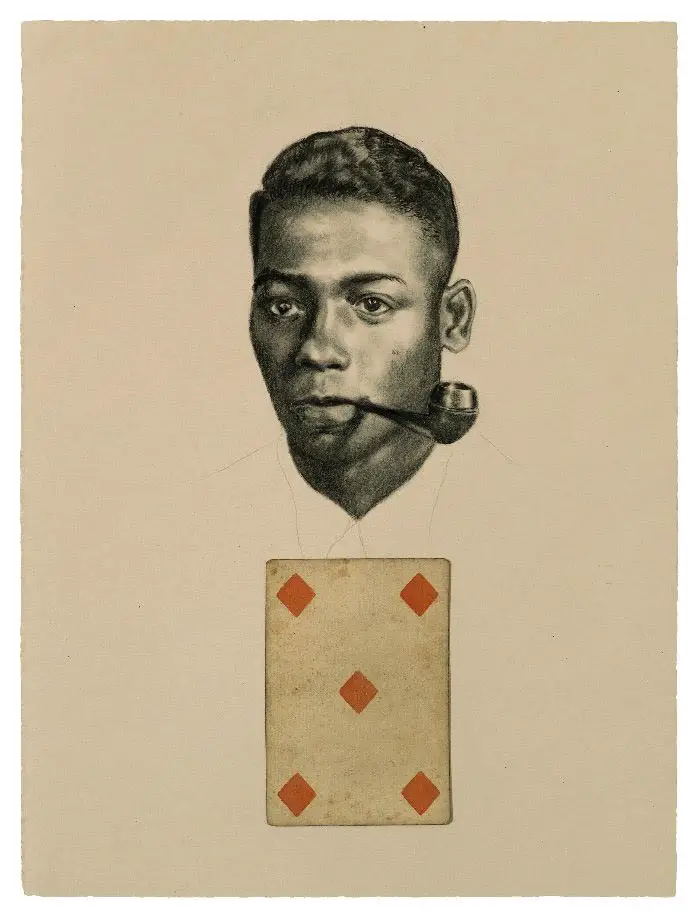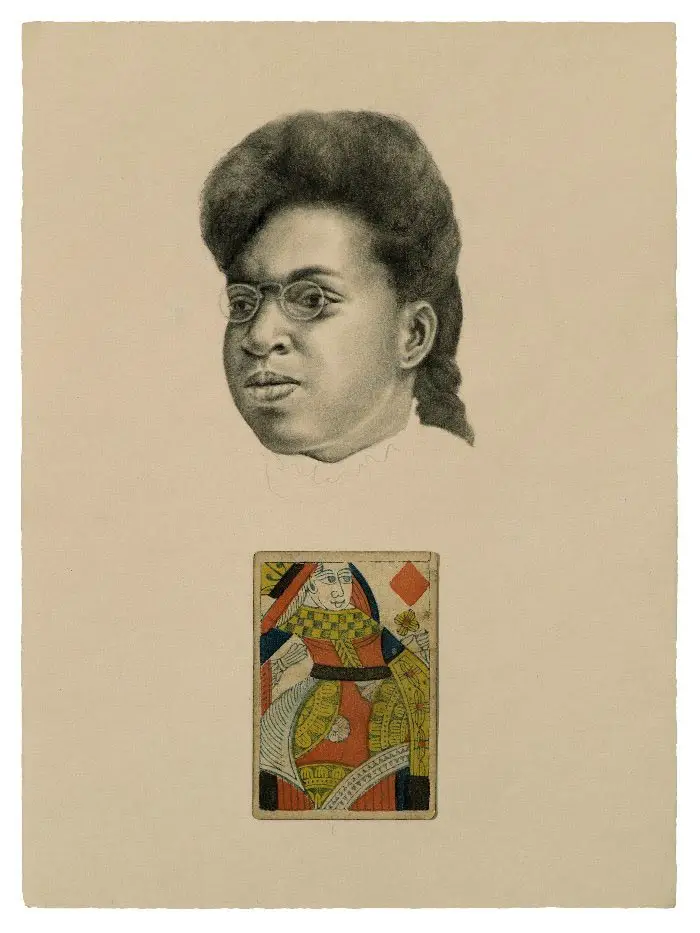Major National Tour Kicks Off in South Florida at the Boca Raton Museum of Art – February 15 through May 21
The first stop on the national tour of the landmark exhibition Whitfield Lovell: Passages is in South Florida at the Boca Raton Museum of Art (on view February 15 – May 21), and the tour will continue across six states throughout the American South and the Midwest.
This is the largest exhibition ever presented of Lovell’s work that focuses on lost African American history, and raises universal questions about America’s collective heritage.
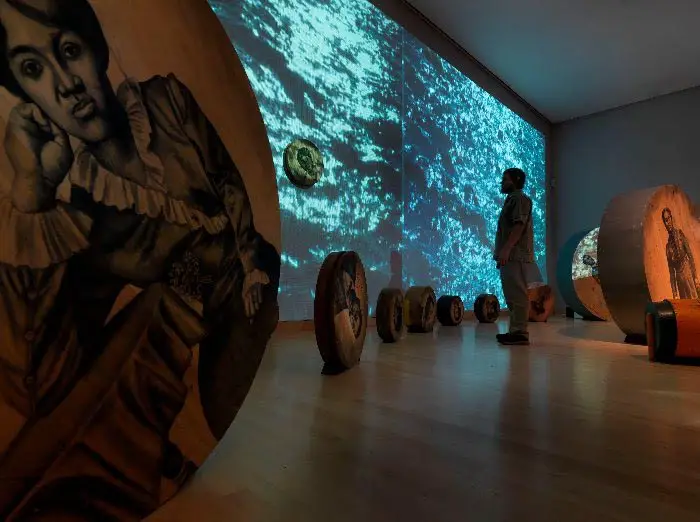
Organized by the American Federation of Arts (AFA) in collaboration with the artist, the exhibition is supported by the National Endowment for the Arts (NEA) and the Terra Foundation for American Art, and encompasses the entire first floor galleries of the Boca Raton Museum of Art (more than 7,500 square feet).
This is the first time these multi-sensory installations by Lovell are presented together in a museum-wide show of this monumental size and scope.
“I see the so-called ‘anonymous’ people in these vintage photographs as being stand-ins for the ancestors I will never know,” says Whitfield Lovell.
“I see history as being very much alive. One day, 100 years from now, people will be talking about us as history. The way I think about time is very different – I don’t think it really was very long ago that these things happened, it wasn’t that long ago that my grandmother’s grandmother was a slave,” adds Lovell. “The ancient Native American principles say it takes seven generations to overcome a tragedy, so in this context of generations we can begin to grasp why we are at this point we are living in now.”
“These installations create a profound immersive experience that enables visitors to become participants in, not just observers of, the experience of these ancestors who were lost to time,” says Pauline Forlenza, the Director and CEO of American Federation of Arts.
“Together, these works convey passages between bondage, freedom, and socioeconomic independence, promoting a deeper connection with African American histories through art. An exhibition of this magnitude would not be possible without the support of the National Endowment for the Arts, the Terra Foundation for American Art, and the six museums selected for this tour,” adds Forlenza.
“This is a milestone exhibition, and the Boca Raton Museum of Art is honored to be chosen as the first venue to premiere this national museum tour,” says Irvin Lippman, the Executive Director of the Boca Raton Museum of Art.
“In our modern-day world, so feverishly focused on ever-decreasing attention spans, the depth of presence we experience when walking through Lovell’s immersive art reminds us that remembering the past is something that matters,” adds Irvin Lippman.
Lovell is the recipient of a MacArthur Foundation Fellowship Genius Grant, and is recognized as one of the world’s leading artistic interpreters of lost African American history.
The internationally acclaimed artist is celebrated for his exquisitely hand-drawn portraits (many are life-size), drawn with Conté crayons, from historic photos he finds of anonymous individuals), which the artist combines with his intuitive assemblage of time-worn objects to raise universal questions about memory, American life, and reclaiming lost history that had been erased.
The works in this exhibition are anchored by images of everyday African Americans, from the 1860s to the 1950s (between the Emancipation Proclamation and the start of the Civil Rights Movement), a period of time the artist feels has been overlooked by the art world.
Whitfield Lovell: Passages opens with Lovell’s multimedia experience Deep River, honoring the perilous journey enslaved people took crossing the Tennessee River to find asylum at “Camp Contraband” in Chattanooga during the Civil War.
The work is inspired by the rich legacy of African American resilience and community building in the passage from slavery to freedom.
“Camp Contraband was a Union Army encampment where runaway slaves who could make it across the river were given sanctuary and protected from being recaptured by slave hunters,” says Lovell. The experiential work includes a haunting rendition of the traditional Spiritual “Deep River” with its elegiac lyric “I want to cross over into campground.”
“Reminding us that the past does matter: it reverberates in our present”
This passage of time, with its love, loss, despair, danger, and freedom, comes to life via Lovell’s otherworldly, ghostly realms – these tableaux demonstrate ongoing reverberations in our contemporary existence.
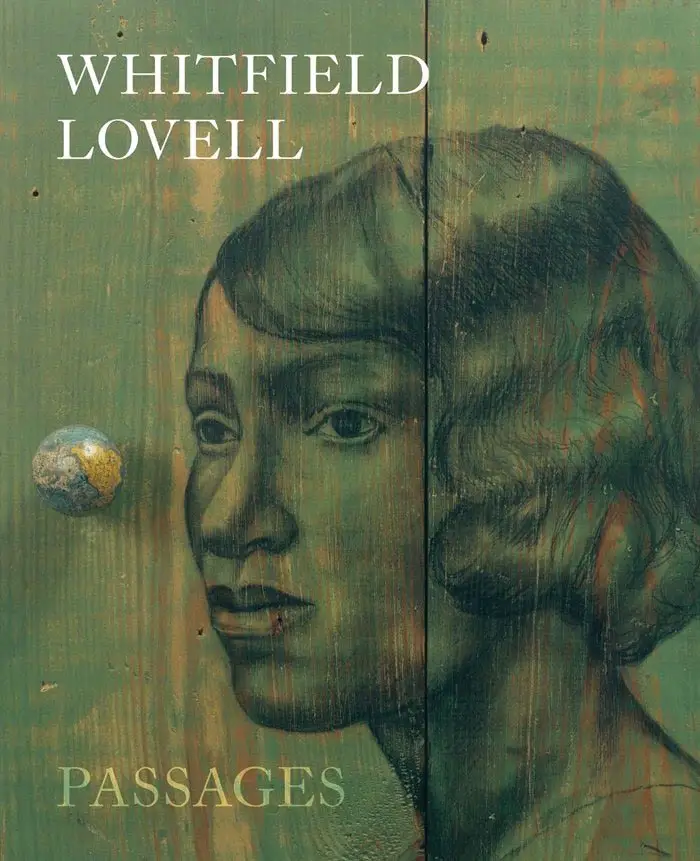
The accompanying catalogue for this national tour (the cover of the catalogue is pictured above), is published by Rizzoli Electa, featuring groundbreaking scholarship and a fresh examination of Lovell’s work with essays by esteemed scholars Bridget R. Cooks and Cheryl Finley.
Works by Lovell are featured in the permanent collections of major museums, including: the Whitney Museum of American Art, NY; the Metropolitan Museum of Art, NY; the Smithsonian American Art Museum, DC; the Smithsonian National Museum of African American History and Culture, DC; Pennsylvania Academy of the Fine Arts, PA; the Yale University Art Gallery; the Hunter Museum of American Art, Chattanooga, TN; The Brooklyn Museum, NY; the Studio Museum in Harlem, NY; Seattle Art Museum, WA, and many others.
The national tour features important loans from several museums, including the recent acquisition by the Boca Raton Museum of Art of Lovell’s artwork entitled The Red XIII and loans from the Bronx Museum of the Arts; Richmond’s Virginia Museum of Fine Arts; the Mott-Warsh Collection in Flint, Michigan, and several private collectors.
Several of the loans for this tour were facilitated by, and some were directly loaned by, New York’s
DC Moore Gallery on behalf of the artist.
“This is the largest exhibition ever presented of Whitfield Lovell’s work that focuses on lost African American history, and raises universal questions about America’s collective heritage.”
Investigating the Circularity of Life
Lovell’s interest in spirituality, healing, and ritual, together with his use of reclaimed and found objects, aromas, music, and sound, has long informed his practice which investigates the circularity of life.
“There were not a lot of role models for me as a young Black man wanting to be an artist, a decision I made when I was very young at the age of 13,” says Lovell.
“I didn’t have a lot of examples telling me that being an artist was something that I could do. When I came along in the art world, Black people didn’t have gallery representation – we made art because we felt strongly that we had to make art. We found a way to make art.”
Fast-forward to now, and one of Oprah Winfrey’s most treasured artworks is Lovell’s tableau entitled Having, which she has kept in her office for decades (the wall-length charcoal image of two African American women features three vintage wood boxes filled with pennies, added by the artist). “These women were early entrepreneurs. I have looked at this every day from my desk for years, to remind me and inspire me that, yes, it can be done,” Oprah Winfrey told the Los Angeles Times about Lovell’s artwork.
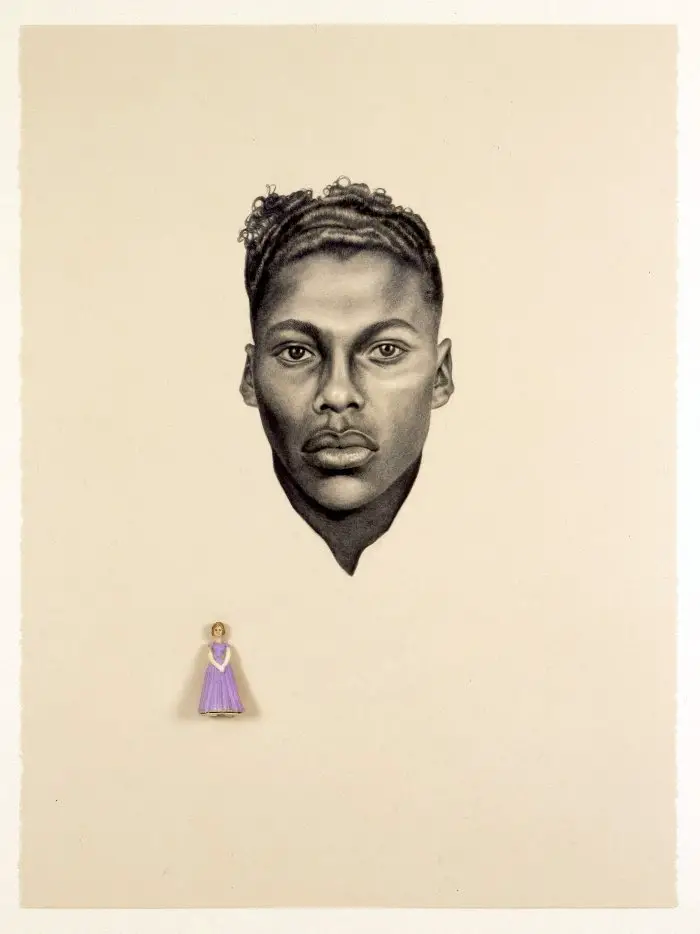
“Lovell’s work, steeped in the nation’s history, rescues a past that was hidden from us.”
In these video conversations with Lovell, recorded in 2020 with Stephanie James (Director of MW Gallery/Curator and Collection Educator of the Mott-Warsh Collection, the artist is described as:
Paying tribute to the daily lives of anonymous African Americans. Inspired by images from his archive of vintage photographs, tintypes, and old postcards from the end of the Civil War to the beginning of the Civil Rights Movement, Lovell provides these unknown figures with identity (video from the Mott-Warsh Collection in Flint Michigan, one of the institutions that loaned works for this national tour).
“Whitfield Lovell is a MacArthur Foundation Fellowship Genius Grant honoree, and is recognized as one of the world’s leading artistic interpreters of lost African American history.”
Honoring the Memory of their Suffering and Perseverance
Lovell’s hand-drawing virtuosity is rare in today’s world of technologically aided artmaking.
The meticulously physical back-and-forth process is how the artist honors the person’s memory and their existence: he applies the charcoal, rubs it with his fingers to get the right tone, and then erases some to create the highlights.
“Drawing by hand is always a particular pleasure for me,” says Lovell. “Hand-drawing from the vintage photograph provokes the viewer to look more closely at the subject matter and to contemplate it more.”
By drawing these dignified portraits with grace and humanity, Lovell is honoring the memory of their suffering and perseverance. “The important thing is to make the art good, so that 100 years from now people would want to look at this work. As an artist, you have to find joy in the act of creating,” says Lovell.
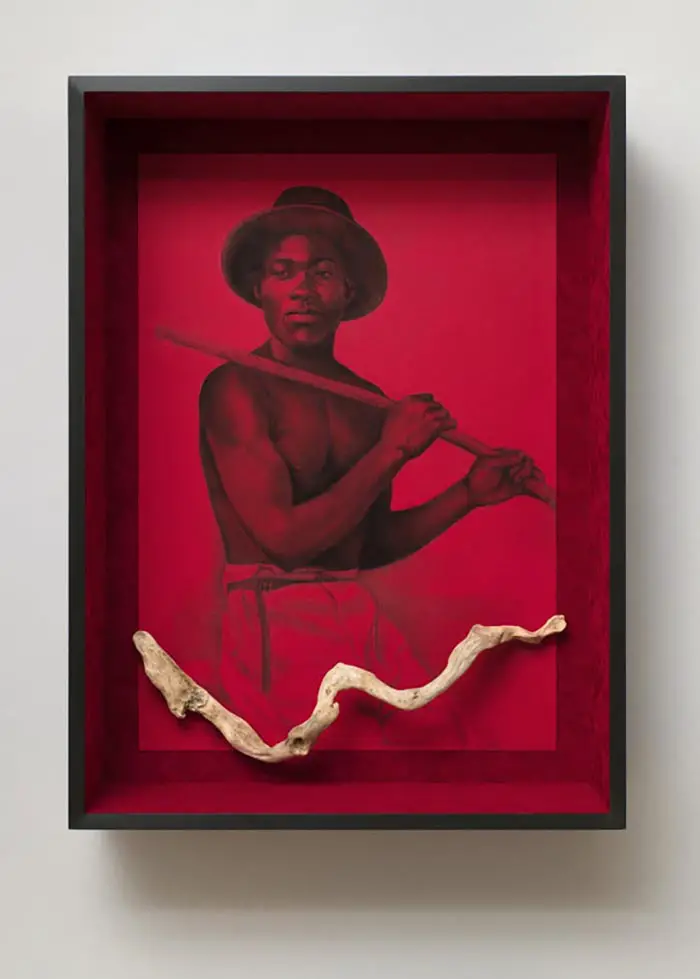
© Whitfield Lovell. Courtesy DC Moore Gallery, New York, and American Federation of Arts.
Each realistic portrait is inspired by the antique photographs he finds in flea markets, discarded family albums, mug shots, and archives. Lovell renders each portrait directly onto old wooden boards with knots, holes, nails, traces of paint and other signs of age.
On working with these vintage wood panels, what someone might consider to be a flaw in the found object becomes truly part of the artwork itself: “I’m working with historical images, and the wood itself has history already. The wood comes from old homes, where old souls once inhabited – so I think allowing the wood to have character is very important.”
The striations of the wood often come through onto the subject’s face. Lovell then adds found household objects such as clothing, dishes or other mementos onto the wooden panel itself, or on the floor near each portrait. Finally, Lovell chooses a title for the tableau using words or phrases with multiple possible, often contradictory, meanings.
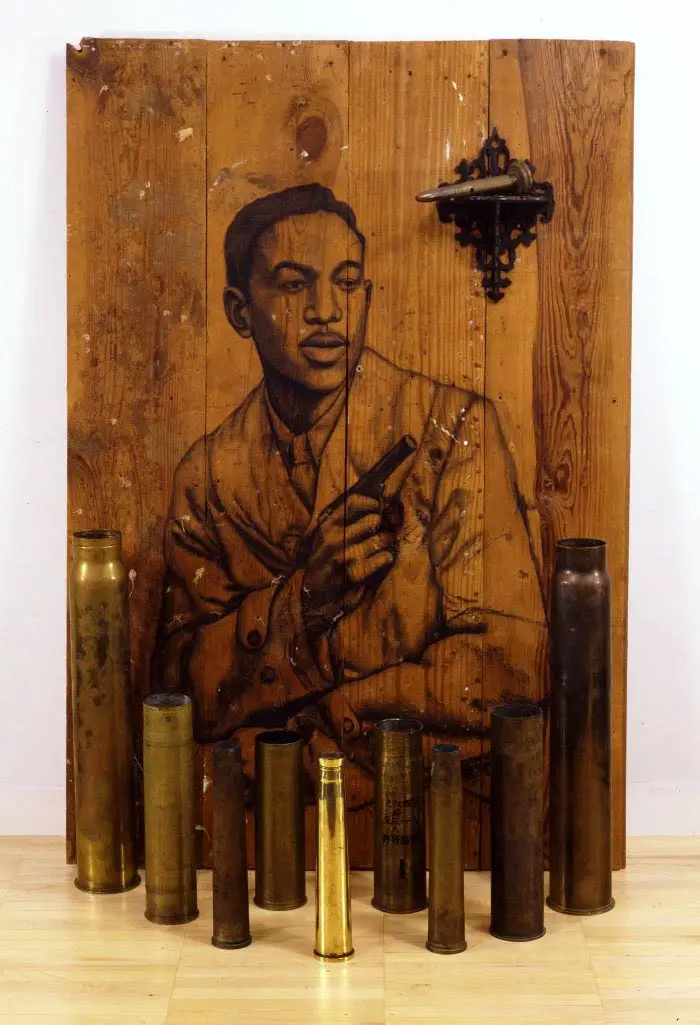
He also uses titles of songs, and often incorporates recorded music of early Blues tunes, traditional slave songs, spirituals and gospel music. These tableaux inspire viewers to imagine how each person lived a full life, richly filled with nuances.
“I have avoided making images of famous people, and instead I use found images of so-called ‘anonymous’ people, whose names we don’t know and whose lives we can’t know about because they were erased from history,” says Lovell.
“At one time this person walked the earth, spoke and lived and dreamed, just as we are doing today. I look for the humanity that I can find from each of the nameless images I choose to work from.” Throughout history, their experiences, psychology, and collective memory have often been overlooked or marginalized.
Lovell’s work, steeped in the nation’s history, rescues a past that was hidden from us.
More about the installation Deep River
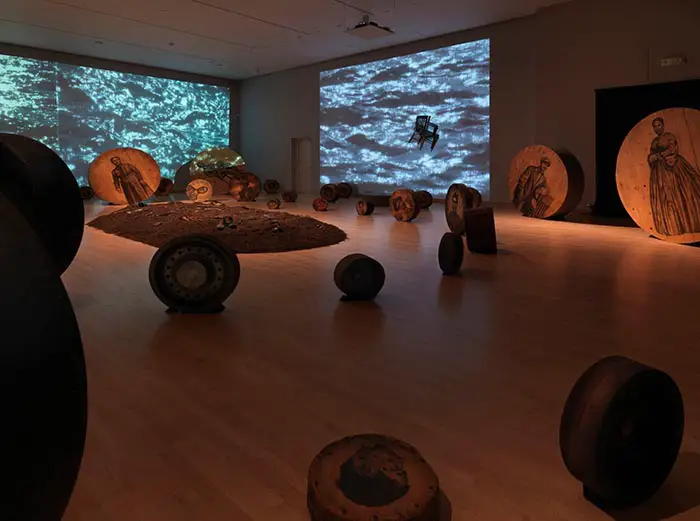
Once behind Union army lines, these freedom seekers formed encampments of their own numbering in the thousands, creating communities of care and self-determination.
By 1863, when the Emancipation Proclamation was issued by President Abraham Lincoln, tens of thousands of “contrabands” had enlisted and fought on the winning side of the Union Army.
At least 10 percent of the Union Army was composed of African Americans, and ultimately these contraband camps became cornerstones of several Black communities in cities in the South.
The section of this installation entitled Flight (pictured below) features a wood cabinet, thirty-three suitcases, a music stand, chest, sheet music, chains, and rope. The suitcases emanate sounds of birds chirping to symbolize freedom and flight.
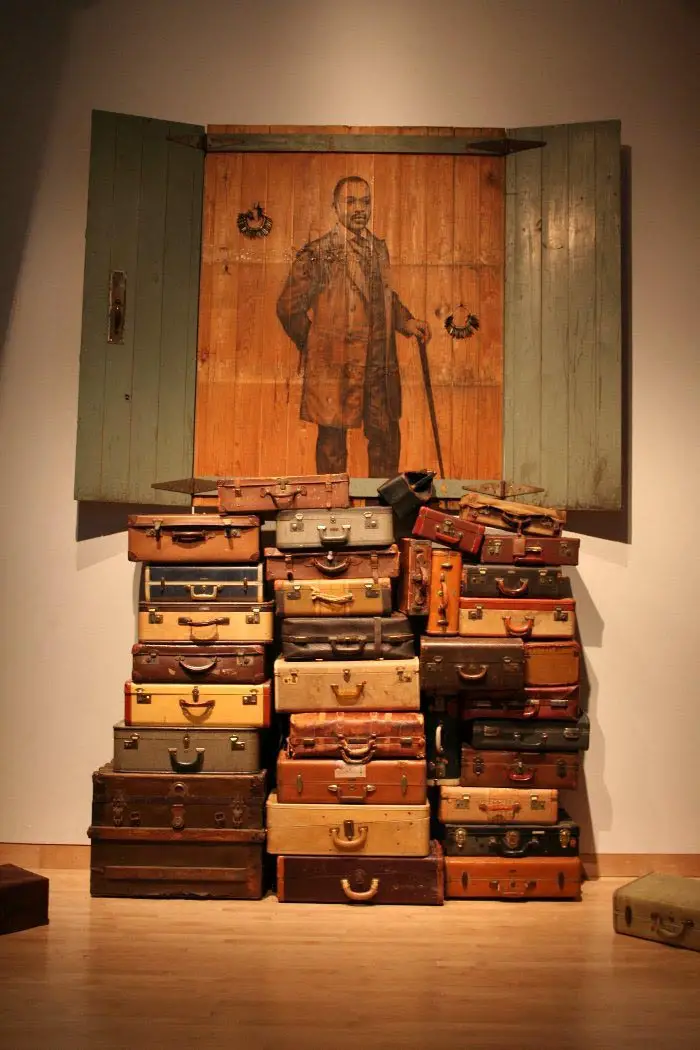
A harmony of ethereal sounds and rich earthy aromas are encountered, before one’s eyes have adjusted to the dim light and Deep River’s powerful visual elements.
Three giant video projections of a river filmed at night wash up onto the Museum walls all around, accompanied by the sounds of lapping water to surround the senses.
The recreated river surrounds a large mound of soil centered on the floor. Arranged around the loamy dirt, embedded within the mound are utensils, pans, lamps, ropes, boots, weapons, a trumpet, a bible and other objects that helped the freedom seekers survive.
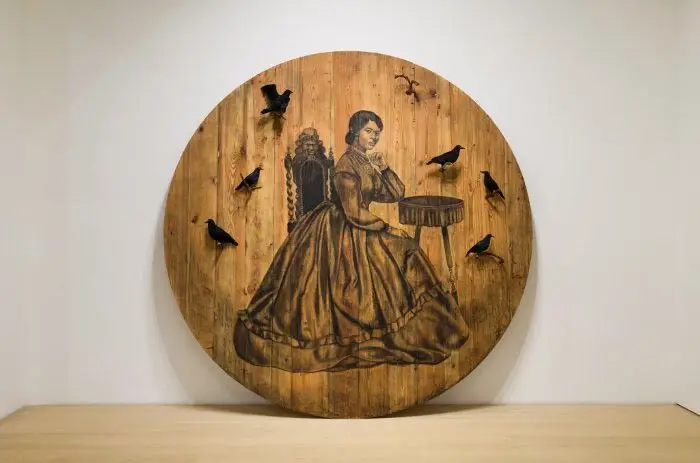
Fifty-six large wooden discs encircle the dirt mound, each with a handmade drawing of a person whose identity has been lost to time. The artist chose to use images of people from multiple time periods to represent how freedom is something we are always struggling with, during all times.
Lovell invites viewers to contemplate the larger human quest for equality, and the pursuit of a better life that crosses beyond time and geography.
Visitation: The Richmond Project
The exhibition also invites museumgoers to walk through another monumental, immersive installation entitled Visitation: The Richmond Project, which takes up an entire gallery.
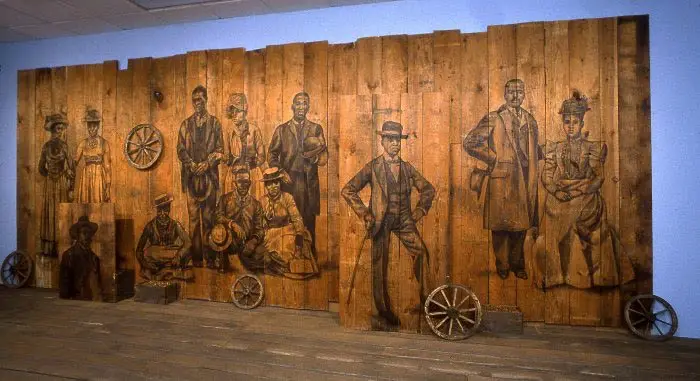
The artist describes Visitation as being about the nation’s first Black entrepreneurial community who settled in Jackson Ward, Richmond, Virginia, in the 1860s (known alternatively as “Black Wall Street” or “the Harlem of the South,” just blocks from the state capitol.
The largest tableau in the Visitation installation is titled Our Best, measures twenty-two feet wide, and features life-sized charcoal drawings of people whose images are based on several historic photographs Lovell found in museums near Richmond.
Dressed stylishly in elegant, turn-of-the-twentieth-century clothing, Lovell’s figures appear to hover just above the time-worn surfaces of the repurposed wood. They look strikingly successful, confident, and proud, assuming stances evocative of the entrepreneurial community of Jackson Ward.
“As you approach the installation,” says Lovell, “you will hear the voice of a woman reciting the names of every resident who lived in this community – as a way of reminding us that these were all real people.”
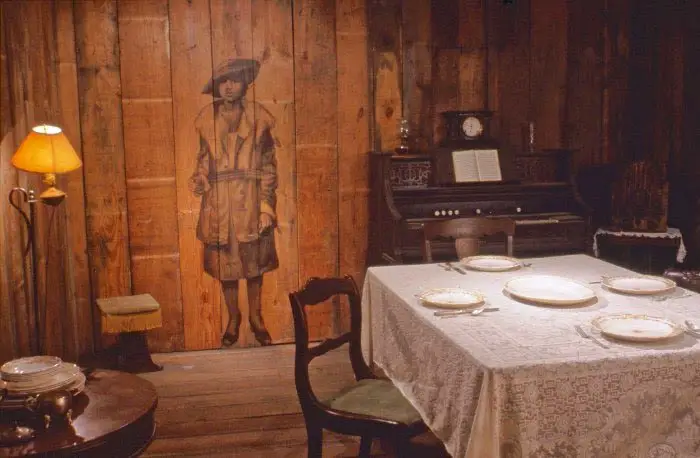
18 ft. 7 1/4 in. x 13 ft. 5 3/4 in. (approx. 250 sq. ft.) © Whitfield Lovell. Courtesy DC Moore Gallery, New York and American Federation of Arts.
“During the opening receptions at different museums and galleries for this installation (pictured above), on the dining table I would place a real meal – with a roasted chicken, collard greens, and candied yams,” says Lovell. “When I did this for the opening in Australia, the museumgoers there could relate this experience to their own shared humanity and their shared past, regardless of their ethnic heritage on the other side of the planet, thousands of miles from where this legendary town once stood in Virginia.”
The wood, pipe tobacco, and real whiskey in the tableau emit familiar smells, while the figures drawn onto the wood plank walls appear as ghostly apparitions.
Established in the Reconstruction era and flourishing through the mid-twentieth century, Jackson Ward was home to an independent Black community that was successful economically, socially, civically, politically and artistically.
Among its citizens were Maggie L. Walker, the country’s first Black woman bank president who founded the St. Luke Penny Savings Bank in 1903, and Sarah Garland Jones, the first Black woman physician in the United States. Jackson Ward hosted entertainers such as Duke Ellington and Lena Horne, and thrived for more than 75 years.
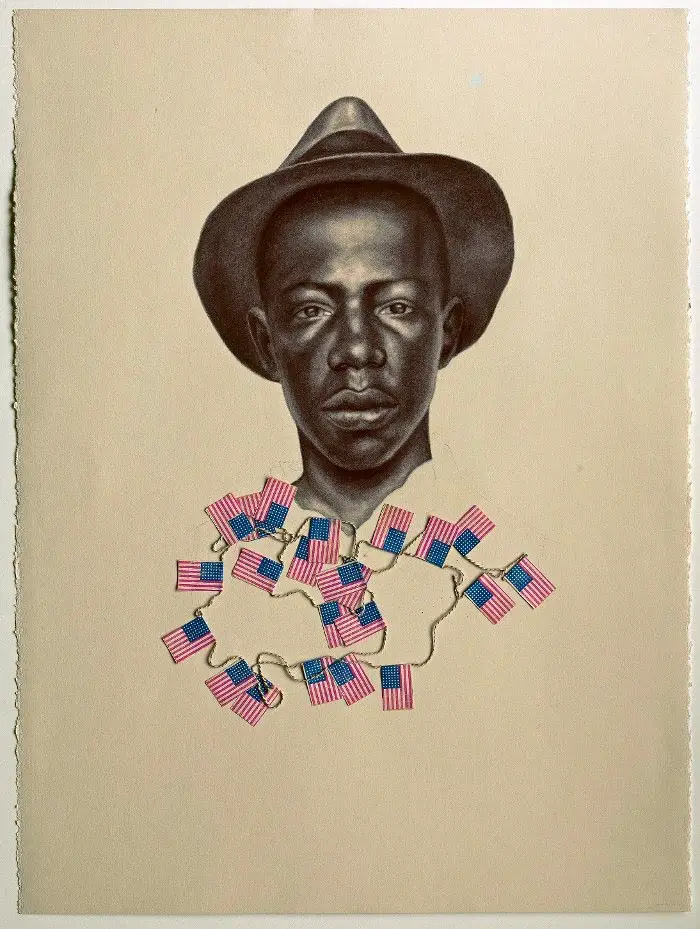
“Where Memory Harnesses the Senses”
A selection of early works on paper, several stand-alone tableaux, and works from three other series round out the exhibition: the Kin series, The Card Pieces, and The Reds – all rich in symbolism and ambiguity.
These works complement the larger installations and show how the artist has created an oeuvre that incorporates elements of poetry, literature, and music with visual art.
Card Pieces, 2021-2021 – Charcoal pencil on paper with attached playing card. 12 x 9 inc. each. © Whitfield Lovell. Courtesy DC Moore Gallery, New York and American Federation of Arts.
“With memory as method, Whitfield Lovell’s works signal future directions for art and culture,” says the art historian Cheryl Finley in her catalogue essay. “Lovell’s works demand deep engagement with memory to elicit complex and layered meanings that pose the past against the present. His creations probe the historical record, while drawing attention to the contemporary moment . . . where memory as method harnesses the senses,” adds Finley.
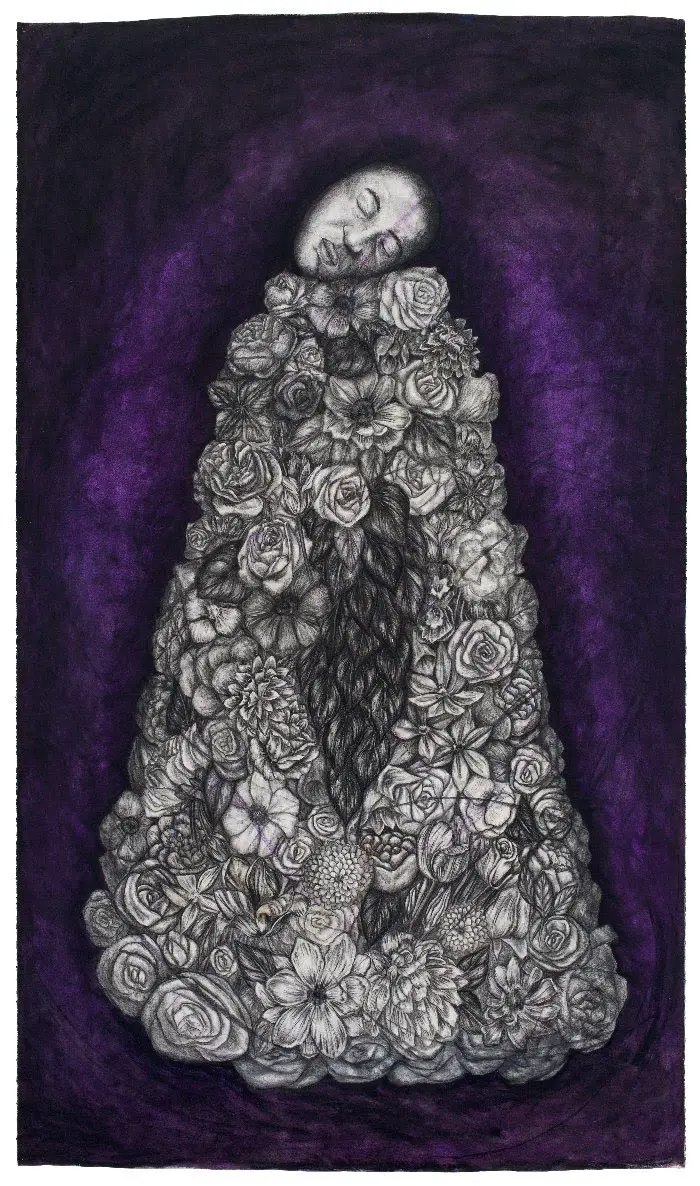
About the Boca Raton Museum of Art
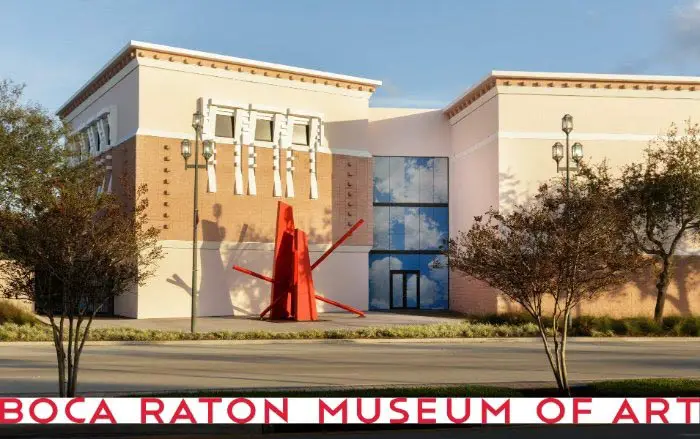
Founded by artists, Boca Raton Museum of Art was established in 1950 as the Art Guild of Boca Raton. Now in its eighth decade, the organization has grown to encompass the Museum, the Art School, and a Sculpture Garden. Celebrated as one of South Florida’s leading cultural landmarks, the Museum provides educational programs and a robust exhibition schedule to the community, and to visitors from around the world.
Media Contacts: for photos, video, and interviews, please contact Jose Lima & Bill Spring, editorial@newstravelsfast.com, 305-910-7762.
About the American Federation of Arts
The American Federation of Arts is the leader in traveling exhibitions internationally. A nonprofit organization founded in 1909, the AFA is dedicated to enriching the public’s experience and understanding of the visual arts through organizing and touring art exhibitions for presentation in museums around the world, publishing exhibition catalogues featuring important scholarly research, and developing educational programs.
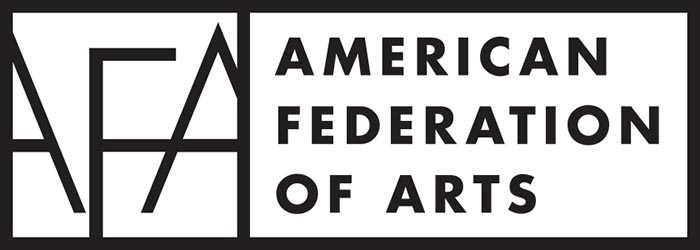

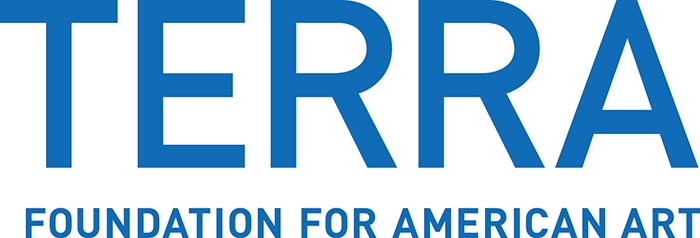
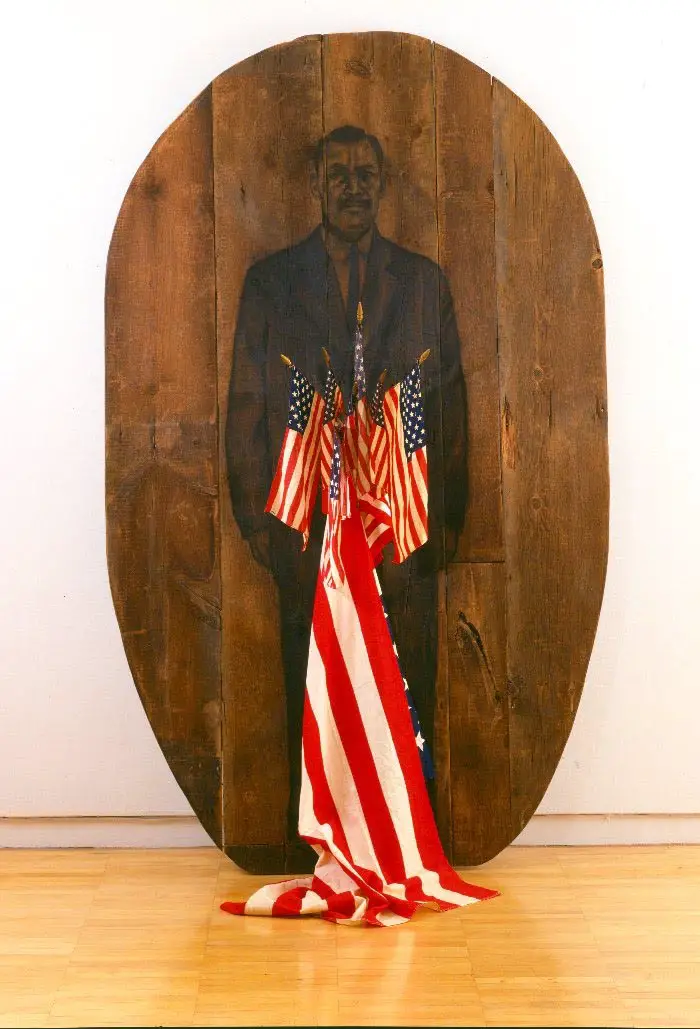
##
Learn More
With love,
FWO



